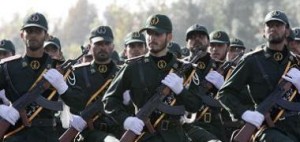 An explosion at an Iranian military training base that was apparently triggered when a munitions cache caught fire by accident killed and injured several servicemen on Tuesday, Iranian news agencies reported.
An explosion at an Iranian military training base that was apparently triggered when a munitions cache caught fire by accident killed and injured several servicemen on Tuesday, Iranian news agencies reported.
An Iranian official quoted by the Fars news agency said bodies were still being identified and the exact number of those killed would not be announced until Wednesday.
The explosion at a base in Khoramabad, western Iran, occured roughly three weeks after a deadly bomb attack on a military parade in northwestern Iran and only days after gunmen killed several police officers in the capital of Iran’s Kurdistan province.
Analysts have said the killings could raise pressure on President Mahmoud Ahmadinejad, whose government has been plagued by infighting and economic woes linked in part to foreign sanctions imposed over Iran’s disputed nuclear programme.
Iran’s official IRNA news agency said Tuesday’s blast had happened after “a place where ammunition was kept” caught fire. The website of Iran’s English-language Press TV reported the explosion had been caused “by accident”.
Press TV said firefighters and rescue teams were sent to the scene and the injured were rushed to hospital.
The blast at the parade in late September killed 12 people and injured 80 in the city of Mahabad.
Iranian authorities blamed that attack on “anti-revolutionary” militants backed by foreign enemies. Days after it took place, Iran’s elite Revolutionary Guards said they had killed about 30 people who were behind it.
No group claimed responsibility for the blast in Mahabad, which occurred during an annual ceremony for the Iranian armed forces to commemorate Iran’s 8-year war with Iraq in the 1980s.
But several armed groups hostile to the establishment are active in Iran, including Kurdish separatists in the northwest, Baluch militants in the southeast and some Arabs in the southwest.
The Sunni Muslim Jundollah militant group, which Iran says has links to al Qaeda, is the most active. it claimed a double suicide attack on July 15 which killed 28 people, including Revolutionary Guards.
Last week, five Iranians, including four members of the security forces, were killed and nine injured when gunmen opened fire on a police patrol in Iran’s Kurdistan province, the scene of frequent clashes between Kurdish guerrillas and Iranian forces. Alertnet

Leave a Reply
You must be logged in to post a comment.